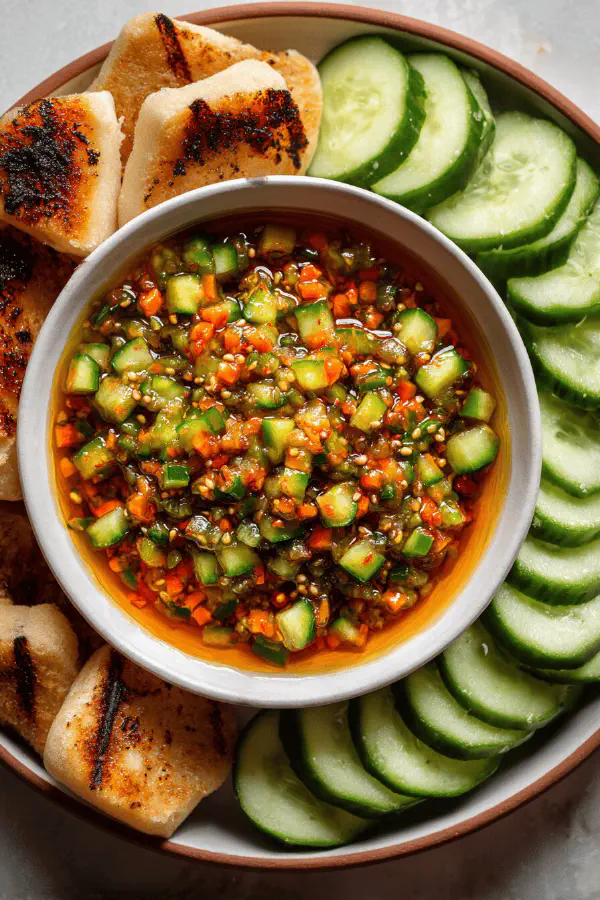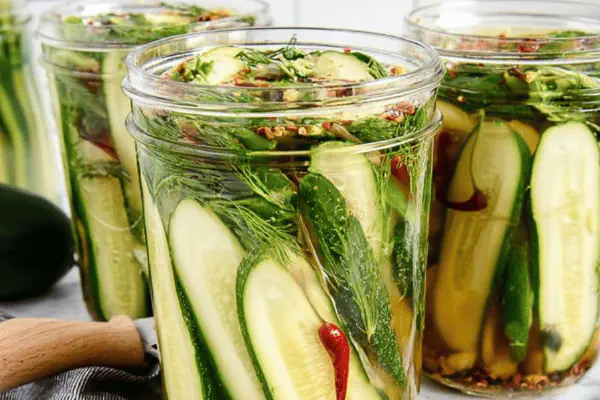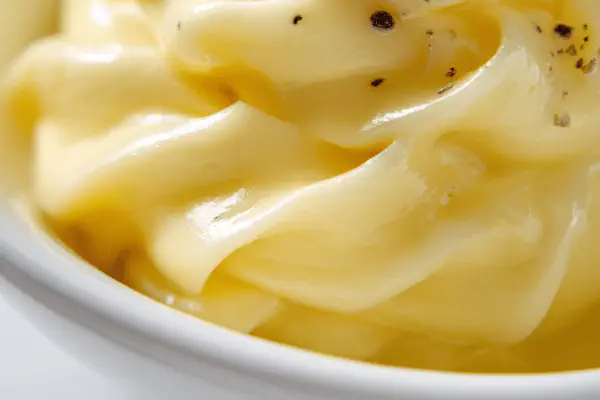Featured Recipe
Mom’s Cucumber Ketchup Remix

By Kate
"
Cucumber ketchup with diced cukes, onions, bell peppers, celery, mustard seeds, turmeric, and vinegar. Uses coarse salt to pull moisture overnight. Cook until thick, fragrant, bubbling, then jar and boil-seal. Modified with carrot in place of celery and apple cider vinegar swap. Reduced sugar and salt by 30 percent. Cook time adjusted; texture focus over timer. Yields 6 jars. A sharp, tangy, chunky ketchup alternative, great on sandwiches, dips, or grilling sauces.
"
Prep:
20 min
Cook:
50 min
Total:
Serves:
6 jars 500 ml
cucumbers
preserving
ketchup
condiments
Introduction
Salt… sugar… vinegar basics. Overnight soak, moisture extraction vital. Mustard pops in every bite. Turmeric earthy, subtle bitter, deep color. Carrots sweet, firm replacing celery. Vinegar swap for fruitier note that cuts sharpness. Cook slow, mid-simmer bubbles, thick syrup coat spoon signals ready. Hot fill jars. Boil bath ensures shelf safety, longer sterilization for peace of mind. Options: ginger twist or smoky paprika. Patience wins here; shortcuts kill texture and shelf life.
Ingredients
About the ingredients
Quantity tweaks save salt and sugar without sacrificing balance. Salt pulls moisture, crucial for preserving crunch and controlling bacterial growth. Using coarse kosher salt over fine improves texture and easier cleanup during rinses; fine salt risks over-salting and cloudiness. Carrots here substitute celery; sweeter, firmer, less fibrous - shifts flavor but keeps body. Apple cider vinegar swaps standard white vinegar adding gentle fruity tang, but acidity remains sufficient for preservation. Mustard seeds add distinct texture and subtle kick; yellow seeds milder than brown. Turmeric is necessary for color and subtle bitterness, mimicked by small pinch of ground ginger if missing. Fresh vegetables always best; older cukes lead to watery ketchup. Finely chopping equates to uniform cooking and better jar fit. Experimenting with bell pepper color changes aroma and visual too, red or orange preferred for sweetness.
Method
Technique Tips
Overnight salting isn’t negotiable. It softens cellular structures, releases water, and firms the final texture. Rinse thoroughly to avoid salty aftertaste. When cooking, medium simmer is essential—not a full rolling boil that destroys vegetables and cloudiness. Thin steam-like bubbling, consistent but gentle, inspires glossy syrup formation. Stirring prevents burning and sticking. Watch color deepen to golden amber; that aroma shift from raw veg to spicy-sweet signals nearing done. Texture shifts from raw crunch to tender yet discernible chunks. Hot-filling jars prevents spoilage risk by minimizing microbial load and ensures even heat distribution inside jar. Extended water bath sterilization adds safety, particularly where vinegar acidity was decreased slightly. Common pitfalls: rushing salting step, uneven chopping, insufficient stirring, early jar filling cold product, and inadequate sealing. Follow sensory clues more than clock.
Chef's Notes
- 💡 Start with fresh and firm cucumbers. Avoid older ones; they yield watery output. Cut sizes uniformly for even cooking. Use course kosher salt; helps with moisture. Rinse veggies thoroughly post-salting - avoid saltiness. Pat dry well; texture’s key.
- 💡 Don't rush salting. Overnight is vital for extracting moisture, softening vegetable structures. Too short leads to mushy result. Color changes during cooking matter; aim for that golden amber shade. Watch for aromas shifting from raw to sweet-spicy.
- 💡 Consider swapping vegetables. Carrots are sweeter, firmer - better than celery here. Mustard seeds add texture - try variations with different colors. Adjust vinegar types based on flavor interest - regular or cider changes depth. Experiment for your taste.
- 💡 Watch boil intensity. Medium simmer keeps vegetables intact. Too aggressive destroys chunkiness. Stir often to prevent sticking. Listen for gentle bubbling – that’s good. If syrup is too thin, cook longer; it should coat spoon distinctly.
- 💡 Jar should be hot when filling. Cold jars risk spoilage. Leave proper headspace. Tight seal is crucial for shelf life. Adjust processing times for altitude differences; safety first. Sterilizing jars adds extra security during storage.
Kitchen Wisdom
How to store cucumber ketchup?
Use cool dark space. Check seals after cooling - tight seals matter. Can refrigerate if preferred. If unsealed, use quickly.
What if ketchup is too thin?
Cook longer to thicken. Stir often; ensure even heat. Don't be tempted to rush - that leads to poor quality.
I don’t like mustard seeds.
Consider skipping; they add bursts of texture. Use ground mustard for mildness. Or experiment with different spices.
Can I adjust sugar amounts?
Yes, but cut gradually. Too little may alter the balance. Modify based on sweet preference; don’t overdo.



